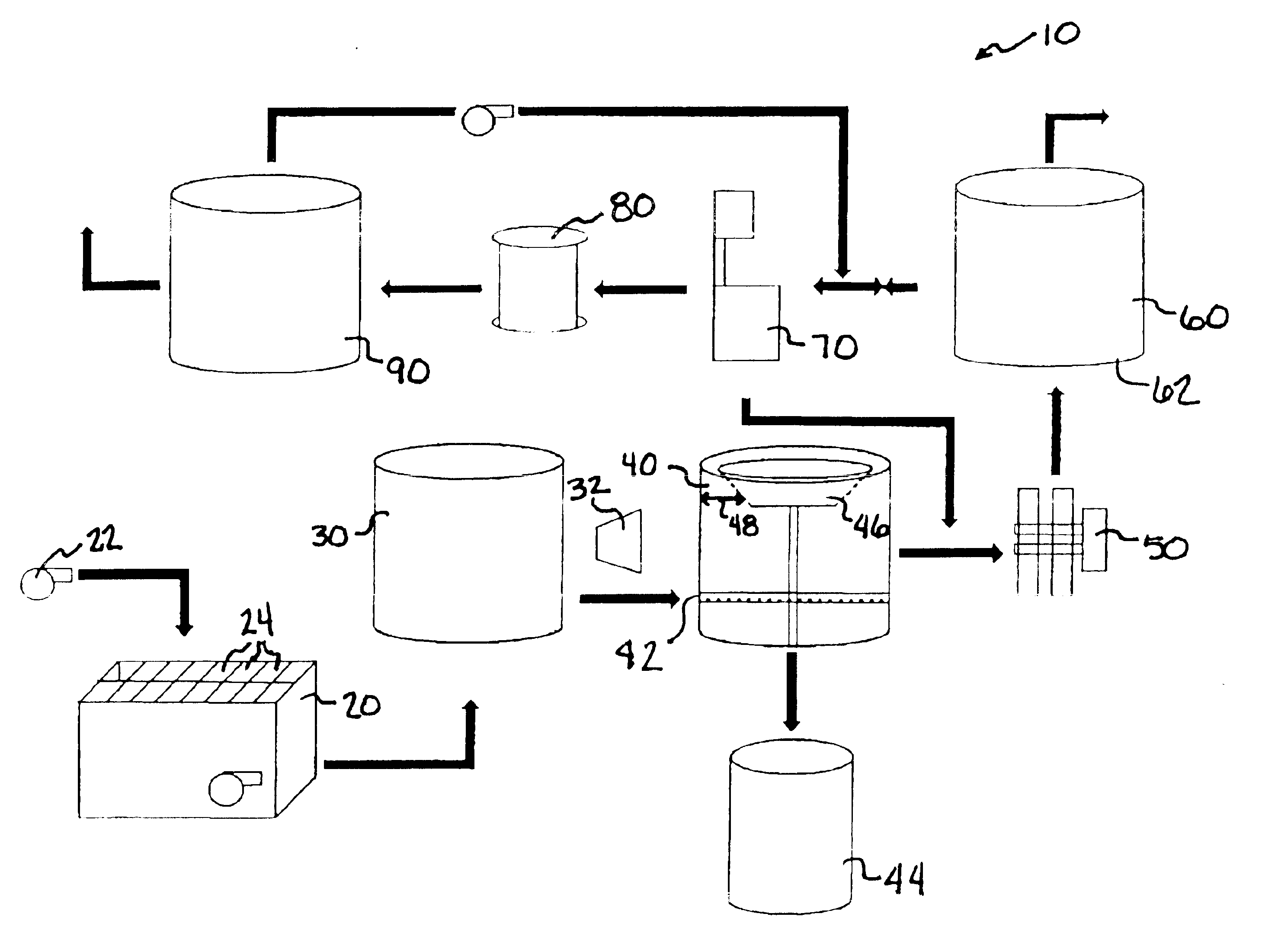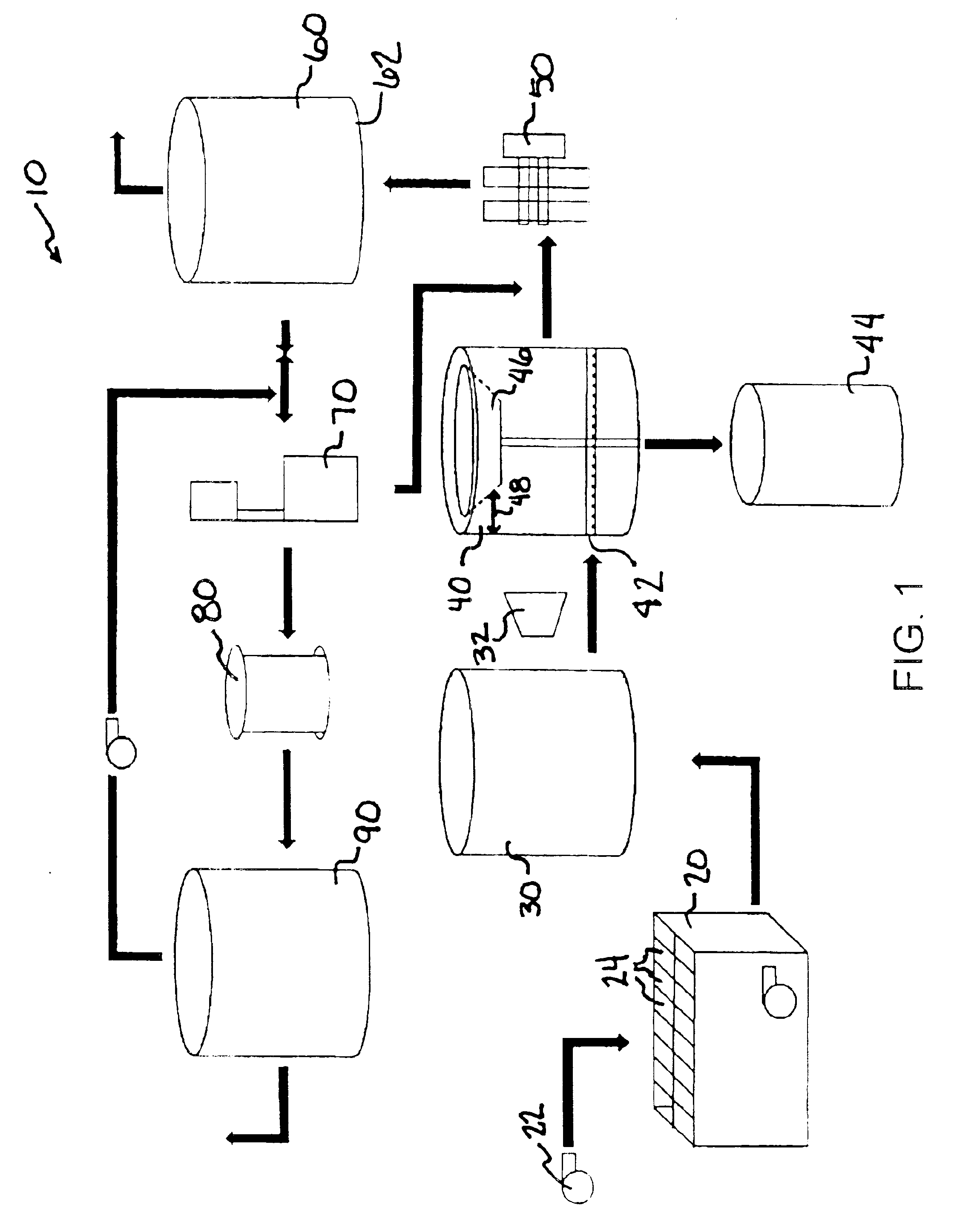Bilge water reclamation system and process
a technology of bilge water and reclamation system, applied in the direction of water/sewage treatment by ion exchange, water/treatment water by electric/magnetic means, etc., can solve the problems of not reaching the level of success and adversely affecting the plankton population, so as to reduce the load of activated carbon, facilitate the electrocoagulation process, and reduce the effect of contaminants
- Summary
- Abstract
- Description
- Claims
- Application Information
AI Technical Summary
Benefits of technology
Problems solved by technology
Method used
Image
Examples
Embodiment Construction
[0021]FIG. 1 depicts the inventive bilge water treatment system 10. The bilge water treatment system 10 comprises a sump 20, a holding tank 30, an oil / water separator 40, at least one electrocoagulation cell 50, a separation / retention tank 60, an ozone generator 70, a carbon filter 80, and a discharge tank 90. The process for treating bilge water includes receiving wastewater influent, separating oil from the wastewater, injecting ozone into the wastewater, using electrocoagulation to treat the wastewater, retaining the waste water to separate any flocculant and agglomeration, injecting more ozone into the waste water, filtering the waste water through activated carbon, treating sludge and discharging clean water.
[0022]Wastewater influent. A few of the most important factors to consider in receiving the wastewater such as bilge and ballast water is to reduce the time required to offload, to accept a variety of delivery methods, and to protect against spillage or environmental contam...
PUM
| Property | Measurement | Unit |
|---|---|---|
| size | aaaaa | aaaaa |
| velocity | aaaaa | aaaaa |
| voltage | aaaaa | aaaaa |
Abstract
Description
Claims
Application Information
 Login to View More
Login to View More - R&D
- Intellectual Property
- Life Sciences
- Materials
- Tech Scout
- Unparalleled Data Quality
- Higher Quality Content
- 60% Fewer Hallucinations
Browse by: Latest US Patents, China's latest patents, Technical Efficacy Thesaurus, Application Domain, Technology Topic, Popular Technical Reports.
© 2025 PatSnap. All rights reserved.Legal|Privacy policy|Modern Slavery Act Transparency Statement|Sitemap|About US| Contact US: help@patsnap.com


